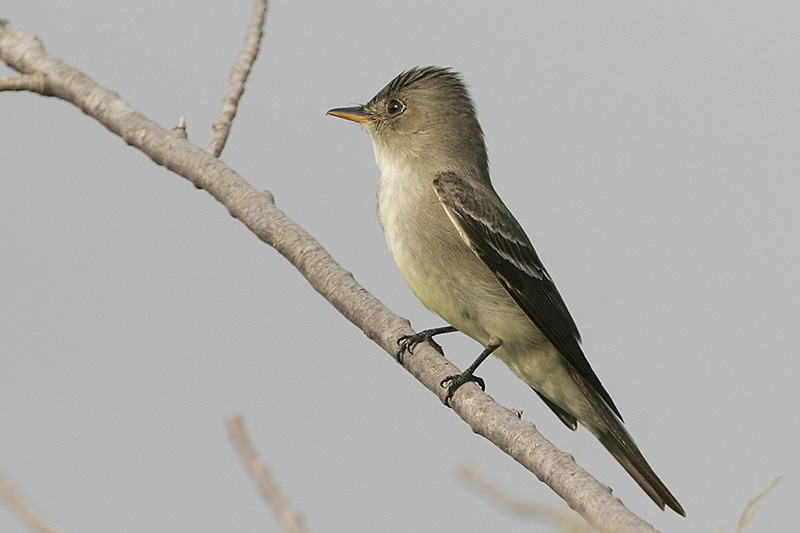The Eastern Wood-Pewee is a medium-sized flycatcher with a long tail and wings. They have an upright posture, short legs, and a crown that’s peaked, making the head look triangular.
Eastern Wood-Pewees are easy to miss until they open their bills. Then, they have an unmistakable slurred call that sounds like pee-a-wee!
These tiny flycatchers perch in the mid-canopy on dead branches and charge out after flying insects.
On this page
Identification
Eastern Wood-Pewees are olive-gray overall and have dark wings. Additionally, their underparts can have a little yellow or none at all. The throat and belly are off-white, and the sides of the breast are dark. This gives them a vested appearance that’s common to pewees.
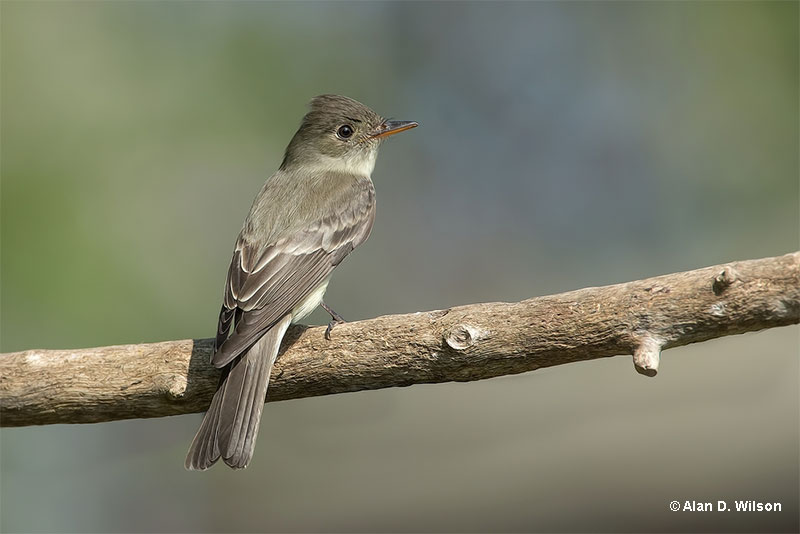
© Alan D. Wilson
They have little or no eyerings and thin, white wing bars. Juvenile birds have buffy wing bars. The underside of the bill is primarily yellow-orange. These birds are 5.9 inches (15 centimeters) long, weigh 0.3 to 0.7 ounces (10 to 19 grams), and have a wingspan of 9.1 to 10.2 inches (23 to 26 centimeters).
Female Eastern Wood-Pewees look identical to male Eastern Wood-Pewees.
Food
The Eastern Wood-Pewee catches insects out of the air by charging out of the tree canopy from an old branch. Research suggests that these birds make about 36 charges per hour and nearly twice that during breeding season when feeding their chicks.
It may also catch insects from the ground or foliage, sometimes taking advantage of large amounts of prey during insect emergences. It primarily consumes insects like butterflies, flies, moths, wasps, bees, grasshoppers, beetles, crickets, mayflies, and stoneflies.
These birds will also consume small amounts of plant matter like poison ivy, the seeds and berries of raspberries, dogwood, and blueberries.
Like other species of flycatchers, Eastern Wood-Pewees rarely come to feeders; however, they’ll sometimes visit wooded backyards that are adjacent to patches of woodlands or forests.
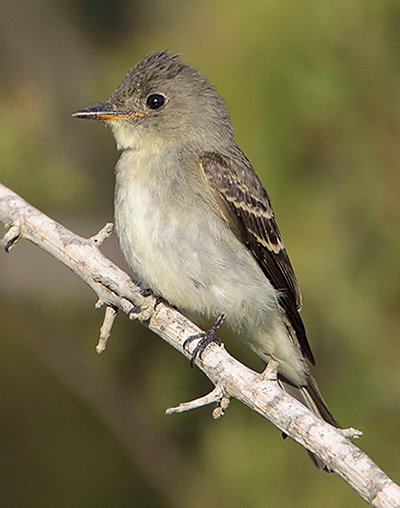
Nesting and Eggs
Eastern Wood-Pewees nest in saplings and trees such as birches, oaks, elms, and maples.
The nest can be anywhere from 15 to 70 feet from the ground. They’re small and made of grass, wool, weeds, bark strips, roots, twigs, mosses, leaves, or pine needles.
The nest can also be covered with lichens because they have excellent camouflage. It measures 1 to 2 inches tall and 3 inches wide. The inner cup of the nest is often lined with grass, hair, moss, plant fibers, and lichens. The inner cup usually measures 0.5 to 1 inches tall and 2 inches wide.
Eastern Wood Pewees generally have 2 to 4 eggs. They incubate them for 12 to 14 days.
Current Situation
Eastern Wood-Pewee is a relatively common bird; however, their populations have declined by 44% between the late 1960s and 2019. Their estimated breeding population is 6.5 million. According to the IUCN Red List, their numbers are decreasing, but Eastern Wood Pewees remain a species of low concern.
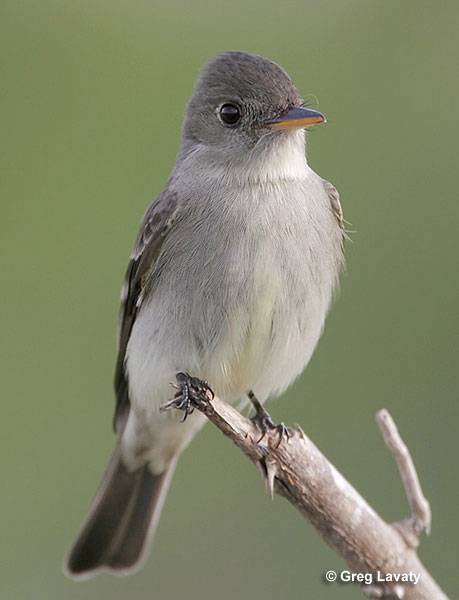
One possible reason for their population decline may be the high populations of deer in the northeast. Their browsing can cause changes to the canopy where these birds forage.
Eastern Wood-Pewees are commonly found in forest edges and clearings.
They breed in almost any type of wooded habitat in southeastern Canada and the eastern United States, including urban shade trees, orchards, mature woodlands, woodlots, and roadsides.
During the fall and spring migration, Eastern Wood-Pewees stop in various habitats with shrubs and trees, including primary forest, secondary forest, clearings, and edges. They spend the winter months in partially cleared, shrubby, and wooded habitats of Central America and northern South America.
Facts
- Eastern Wood-Pewees tend to forage higher in the tree canopies when multiple flycatcher species live in the same forest.
- The oldest recorded Eastern Wood-Pewee lived to be at least 8 years and 2 months old. It was initially captured during banding operations and recaptured and rereleased during additional banding operations in 2010 in Maryland.
- Eastern Wood-Pewee’s cover their nests with lichen, making them extremely inconspicuous. It’s hard to spot these nests because they often look like a knot on a branch.
- The Western Wood-Pewee and Eastern Wood-Pewee have different calls and ranges that barely overlap but are nearly impossible to tell apart based on looks.
Similar Species
The Eastern Wood-Pewee has features that are similar to other bird species. Here are some similar species:
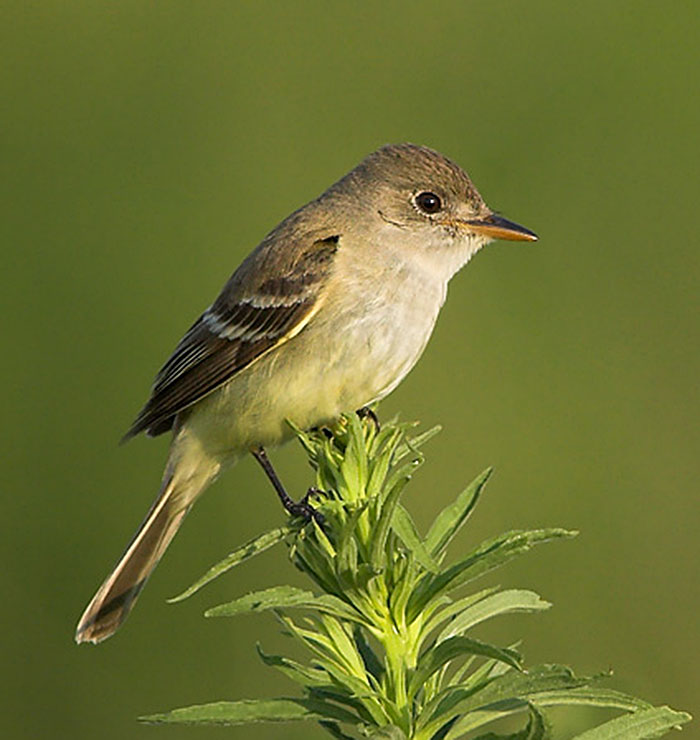
Willow Flycatcher
The Eastern Wood-Pewee has darker sides, less green upper parts and heads, and thinner wing bars than Willow Flycatchers.
Additionally, Pewees sally and return to the same perches, while flycatchers do not.
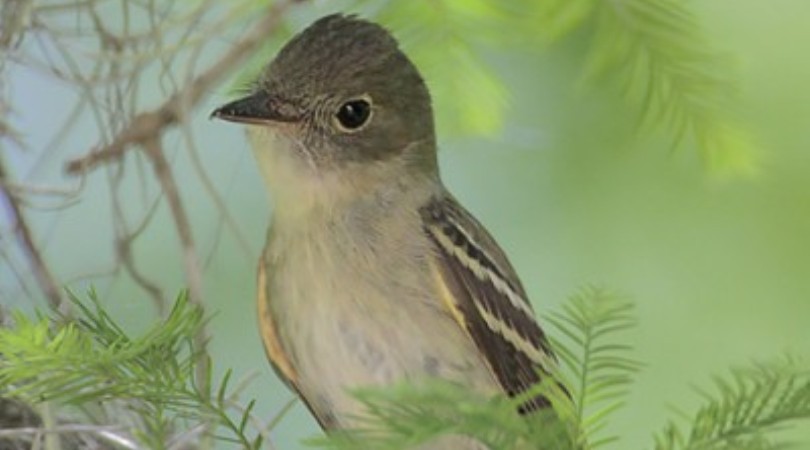
Acadian Flycatcher
Eastern Wood-Pewees don’t have the apparent white eyering that Acadian Flycatchers have.
Additionally, they have darker bellies.
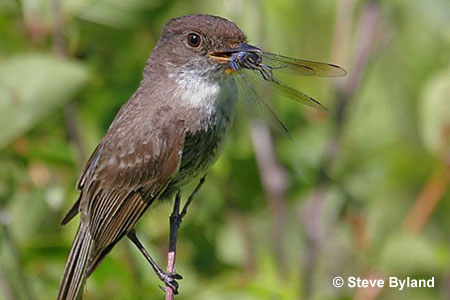
Eastern Phoebe
Eastern Wood-Pewees have grayish wing bars and are grayer overall compared to Eastern Phoebes.
Additionally, Eastern Phoebes have cleaner, white bellies, no wing bars, and darker brown upper parts.
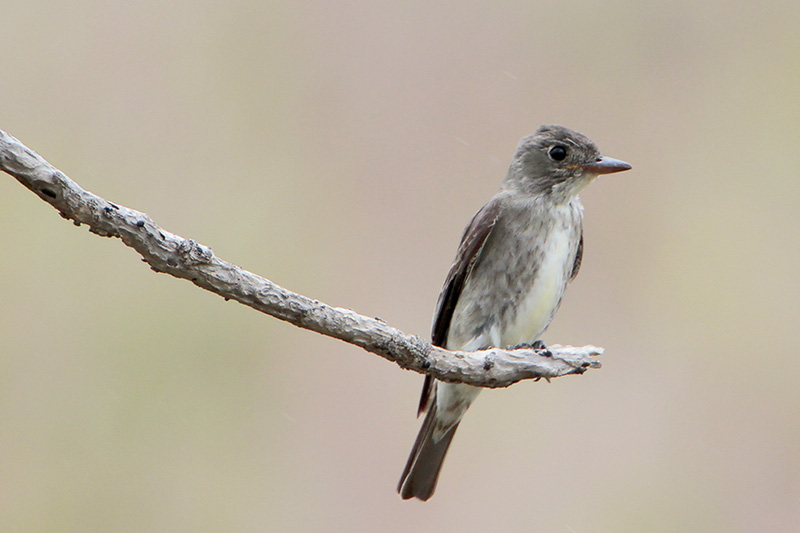
Olive-sided Flycatcher
Eastern Wood-Pewees are smaller than Olive-sided Flycatchers and have smaller heads and bills.
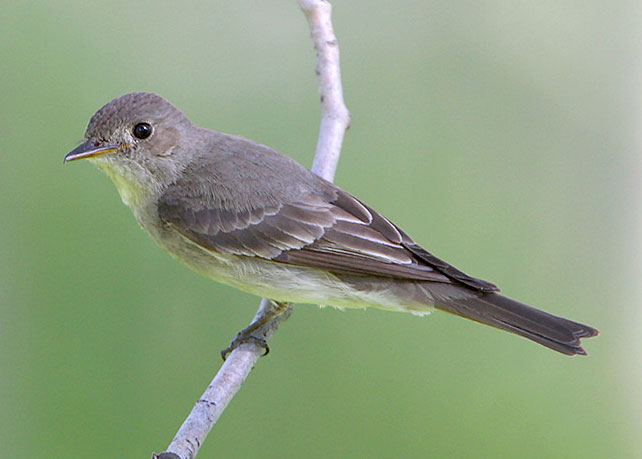
Western Wood-Pewee
Eastern Wood-Pewees and Western Wood-Pewees look almost identical.
However, their calls are different, and their breeding ranges barely overlap.
Western Woo-Pewees can be found in the western side of North America.
Frequently Asked Questions
Are Eastern Wood-Peewees rare?
No, Eastern Wood-Pewees are not rare. Their estimated breeding population is 6.5 million. They can be found across the eastern portions of North America, Mexico, Central America, South America, and the Caribbean, making them a widespread bird.
Where does the Eastern Wood-Pewee live?
Eastern Wood-Pewees are commonly found in forest edges and clearings. They breed almost any type of wooded habitat in southeastern Canada and the eastern United States, including urban shade trees, orchards, mature woodlands, woodlots, and roadsides. During the fall and spring migration, Eastern Wood-Pewees stop in various habitats with shrubs and trees, including primary forest, secondary forest, clearings, and edges.
What does an Eastern Wood-Peewee look like?
Eastern Wood-Pewees are olive-gray overall and have dark wings. Additionally, their underparts can have a little yellow or none at all. The throat and belly are off-white, and the sides of the breast are dark. This gives them a vested appearance that’s common to pewees. They have little or no eyerings and thin, white wing bars. Juvenile birds have buffy wing bars. The underside of the bill is primarily yellow-orange.

